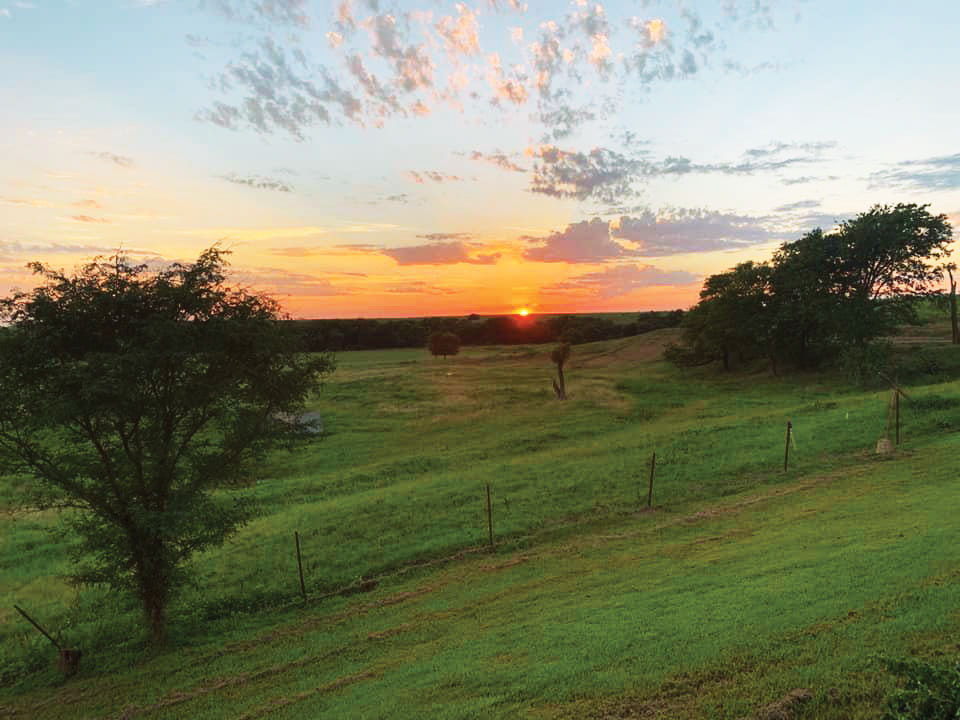
Sean Bansley didn’t begin his working life as a farmer.
He was a union carpenter who ended up having a small farm in Illinois, then a larger one in Iowa. He now has close to 300 acres near Harrison, Ark. Sean and his wife, Carol, are now both on the farm full time, and have worked with Berkshire pigs for more than six years.
The desire of the Bansleys is to go at this “pig-raising thing” full boar. The couple now has 10 sows and one boar.
Sean and Carol said they try to have their pigs scheduled so they will farrow, throughout the year.
“We really need to breed all year long so we have our product available throughout the year,” Sean said.
It would also be difficult for Sean and Carol if all their sows farrowed at the same time.
One sow can usually take care of between 12 to 16 piglets, and the Bansleys’ average litter size is 8.5 pigs. However, if a litter is too large, the couple bottle-feed some of the piglets. Bottle feeding a piglet, Carol says, is the “cutest thing in the world.” The Bansleys have been known to keep the bottle-fed piglets inside for about three weeks, until they’re able to go it on their own outside.
The special thing about the Bansleys’ farm is that it’s Animal Welfare Approved or AWA.
“It’s a third-party certification,” Carol explained. “They come and do an annual audit to see what we do with the animals. It has to be humane. The animals do not get any by-products except whey. The benefit is that when you see that we’re approved by a third-party organization, it’s more convincing. It’s important to our customers.”
Carol further explained that what AWA means is the “polar opposite of confinement.”
The animals can’t be in pens or crates, not even when they farrow. To further satisfy their customers, Sean and Carol have their meat processed by an AWA-certified processor, which is also a USDA-certified processor.
The only type of confinement the pigs receive is a three-sided shelter in order to get out of the rain and cold wind. The pigs are able to tolerate summer heat as long as they’re kept well hydrated and have a place to wallow. Sean and Carol actually hose the pigs down from time to time in the summer moths.
“We have lots of oaks, so they get lots of shade,” Carol said. “And then when the acorns fall, they love them. A lot of animals are finished on acorns, ones that are used for Prosciutto and Pancetta.”
In addition to the Berkshire pigs, Sean and Carol also raise registered British White cattle. The cattle were shipped here from England in 1940. One bull and five cows were sent to the United States as seed stock in order to preserve the breed in case of a Nazi invasion.
Initially, the Bansleys wanted to raise the British Whites because of the breed’s high-quality meat.
Carol said the rib eyes, filet mignons and even the sirloin steaks are tender and delicious. They feed only pasture grasses, including alfalfa, to their cattle.
Sean is also starting to grow his own red and white clover.
“Our goal is to produce all of our own food here,” he said. “We’ve got a row crop planter and we want to plant our own corn.”
Sean added that their plan is to double or triple their pig herd size, but they will have to improve fencing on all the property. At this time, only 10 acres is fenced for the pigs, usually with electric fencing.
They utilize a lot of goat fencing on the property as well, but Sean said it mostly to keep dogs and predators out.
They like their British Whites, but with the Bansleys, it’s mostly about the Berkshires. Like Sean said, “We enjoy the pigs.”







